Easy Breezy Screen Doors
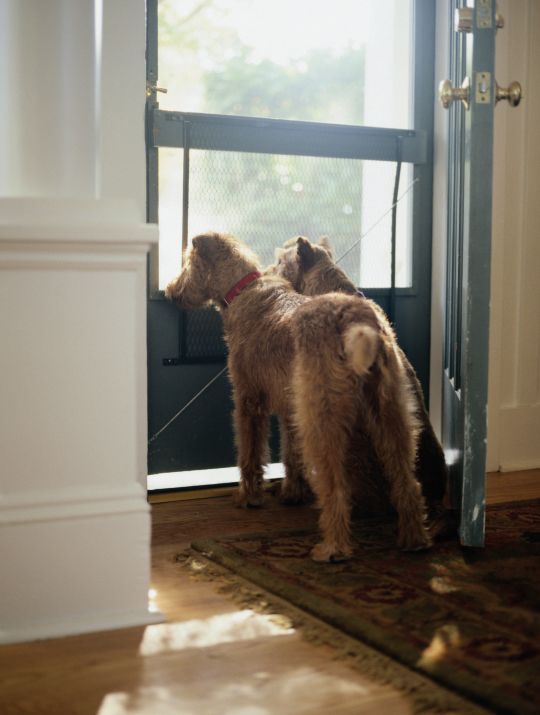
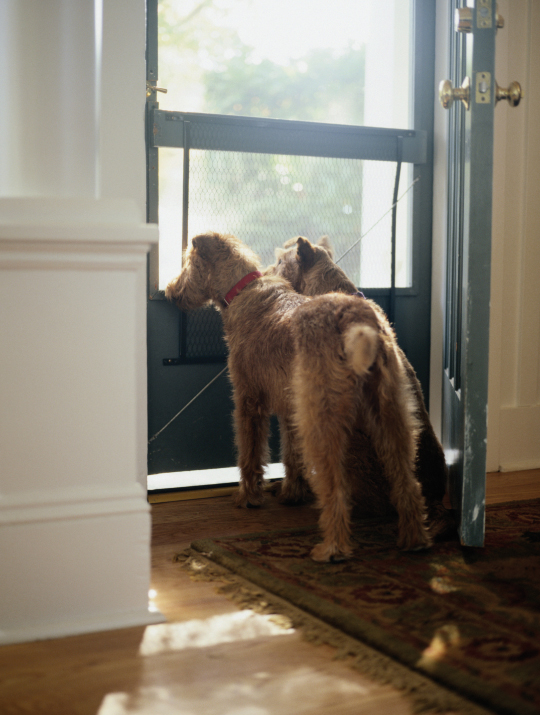 We all have sensory memories that allow us to savor the past in certain ways. Maybe the scent of a particular perfume brings back thoughts of your grandmother, or the sight of a certain flower evokes emotions from your wedding day. For me, I have a sound memory: The squeaking stretch of metal springs on our screen door and the resonating slap as we let it slam closed remind me of my childhood summers when daylight lingered and time passed without notice.
We all have sensory memories that allow us to savor the past in certain ways. Maybe the scent of a particular perfume brings back thoughts of your grandmother, or the sight of a certain flower evokes emotions from your wedding day. For me, I have a sound memory: The squeaking stretch of metal springs on our screen door and the resonating slap as we let it slam closed remind me of my childhood summers when daylight lingered and time passed without notice.The slapping screen doors of my childhood have come a long way, becoming quieter and better-looking over the years. If you don’t have one already, consider adding a screen door or two to your home this summer.
Let the Outdoors In
From the time the weather first starts to show signs of warmth through those last lingering days of Indian summer, a screen door really can add value to your home and your everyday experiences. Though you may be a door’s-always-open kind of person, you can’t literally leave the door open without giving pesky insects an open invitation. A screen door is ideal to let just a bit of the outside in. For parents, the benefit of being able to hear children playing in the yard adds a sense of ease.
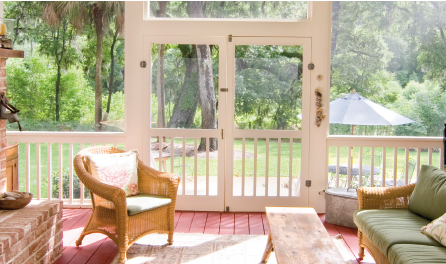 While bidding fresh air, the addition of a screen door also makes way for natural light. Where a solid front door blocks every ray, a screen door allows the main door to be open to illuminate the entry, which also can save on lighting costs.
While bidding fresh air, the addition of a screen door also makes way for natural light. Where a solid front door blocks every ray, a screen door allows the main door to be open to illuminate the entry, which also can save on lighting costs.Although a screen door has its initial investment, it can save money in the long run. Depending on the material, construction and detailing, a basic screen door can range from $150 up to around $500 from a local home store—or you could seek custom options with a higher price tag. Whatever the cost, a screen door acts as a buffer between the main door of a home and outside elements such as rain, snow and wind. Installing one could increase the life of your principal door, especially if it requires painting. The added barrier of an additional door also provides insulation, which can lower electric bills. Many screen doors are also fitted with a glass storm window that can be inserted when the weather becomes too hot or too cold to keep heat and air conditioning from escaping.
Installing a screen door will beef up the security of a home as it creates another barrier for an intruder to break through, and many screen doors can be fitted with deadbolts. A screen door also acts as an obstacle between the homeowner and those who approach the home, still allowing a conversation to take place through the screen. This works well for those who are disabled or have physical limitations.
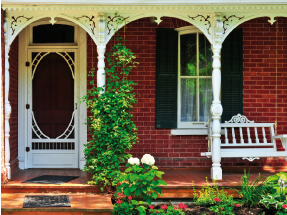 Perhaps a favorite reason for adding a screen door is that it can instantly perk up an entryway and add curb appeal. If you are sprucing up your porch or adding some interesting landscaping, a new door will complement the entire look—and let you admire your work from inside your home as well. You may be surprised at all the decorative options available (check out funhousedesign.com for some inspiration). Screen doors also have their place on side entries (which many people use more than their front door), and even mudrooms. Painted screen doors are also the perfect way to add a pop of color. Love lemon yellow, clover green or barn red? Add that bit of personality to your home in this fun, practical and low-commitment way.
Perhaps a favorite reason for adding a screen door is that it can instantly perk up an entryway and add curb appeal. If you are sprucing up your porch or adding some interesting landscaping, a new door will complement the entire look—and let you admire your work from inside your home as well. You may be surprised at all the decorative options available (check out funhousedesign.com for some inspiration). Screen doors also have their place on side entries (which many people use more than their front door), and even mudrooms. Painted screen doors are also the perfect way to add a pop of color. Love lemon yellow, clover green or barn red? Add that bit of personality to your home in this fun, practical and low-commitment way.There are many styles and materials available to suit the needs of just about any home, and each has its benefits. Most screen doors are constructed of wood (easy to paint and personalize), steel (extremely durable) or vinyl (sturdy and economical). For the screen itself, metal is not the only choice anymore; screens are also made of vinyl, copper, fiberglass or plastic. When choosing the construction, be sure to consider the amount of wear and tear it will receive, along with whether children and/or pets will be using the door often.
Before purchasing a door, determine whether you need a right- or left-hinged door. You can tell by viewing a door from the outside. Next you need to measure the opening. HomeDepot.com suggests, “Measure the height from the floor to the bottom of the header on both sides of the doorframe, and use the smaller measurement. To determine the width, measure across the top, center and bottom of the doorway, and use the smallest measurement.” Armed with these measurements, you are ready to buy. There are several standard sizes of doors, which fit door heights of approximately 80 inches, and widths of around 30, 32 or 36 inches, with a standard depth of 1 inch. Keep in mind that wooden doors are the easiest type to adjust, since they can be trimmed or sanded down to fit nonstandard entryways.
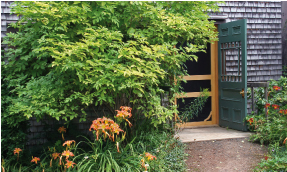 Truth be told, installing a screen door can be a bit of a challenge, but following a few simple tips will help get it right. Hanging your door is probably a two-man job, and you’ll also need a tape measure and a power drill. To start, experts suggest holding the door in the opening and marking with a pencil 20 inches from the top, and 20 inches from the bottom of the door opening; this is where the hinges will go. Drill the hinges on the frame, and then the door while someone else holds the door in place. Make sure the door opens and closes properly; if it doesn’t, then adjust the tightness of the screws until it does.
Truth be told, installing a screen door can be a bit of a challenge, but following a few simple tips will help get it right. Hanging your door is probably a two-man job, and you’ll also need a tape measure and a power drill. To start, experts suggest holding the door in the opening and marking with a pencil 20 inches from the top, and 20 inches from the bottom of the door opening; this is where the hinges will go. Drill the hinges on the frame, and then the door while someone else holds the door in place. Make sure the door opens and closes properly; if it doesn’t, then adjust the tightness of the screws until it does.Now that summer is here, it is time to bring the outdoors in with simple ways. Whether your goal is to enhance your home, hear the laughter of the neighborhood children or enjoy the lingering hours of daylight, I hope that you will be well on your way to making some sensory summer memories of your own.






